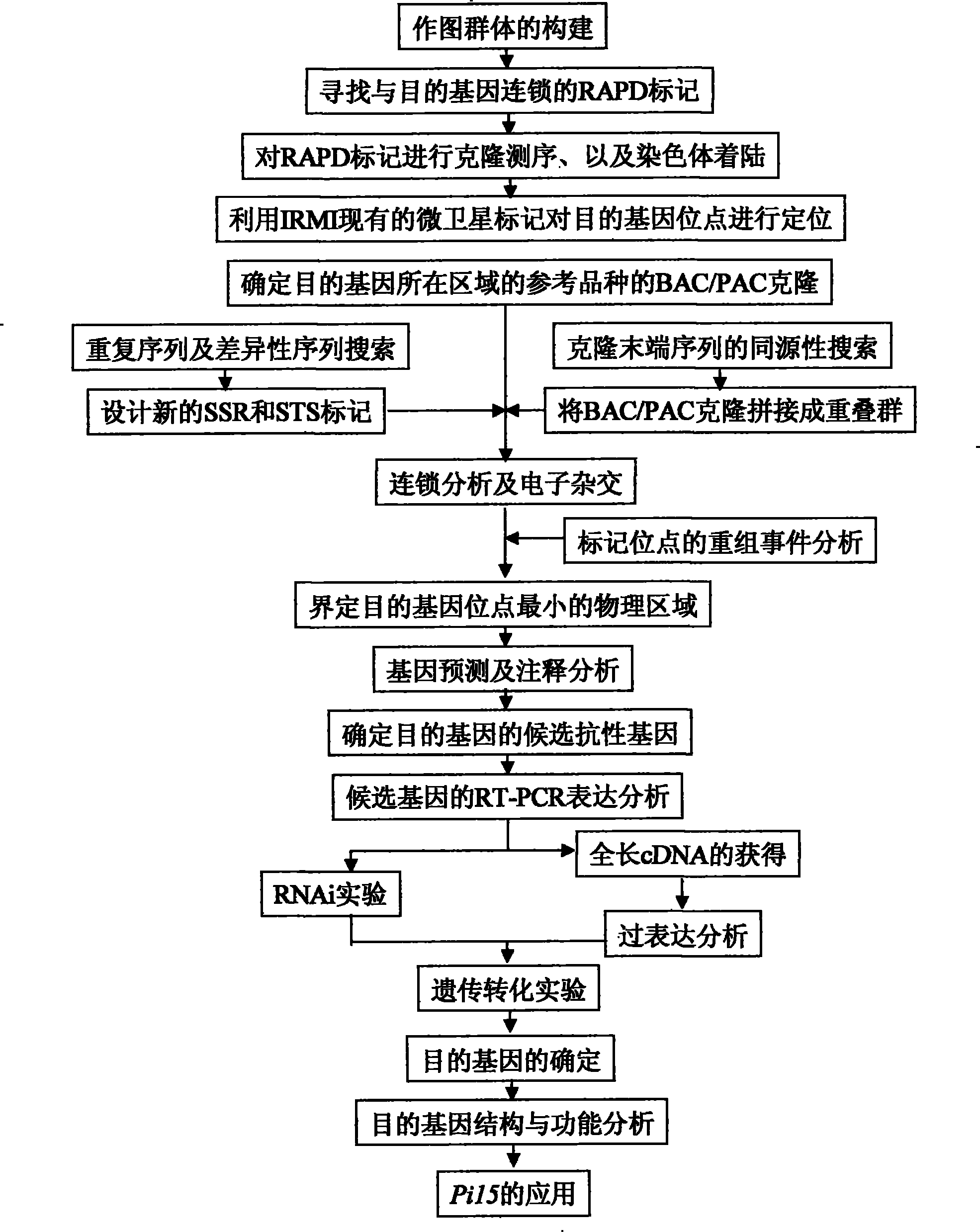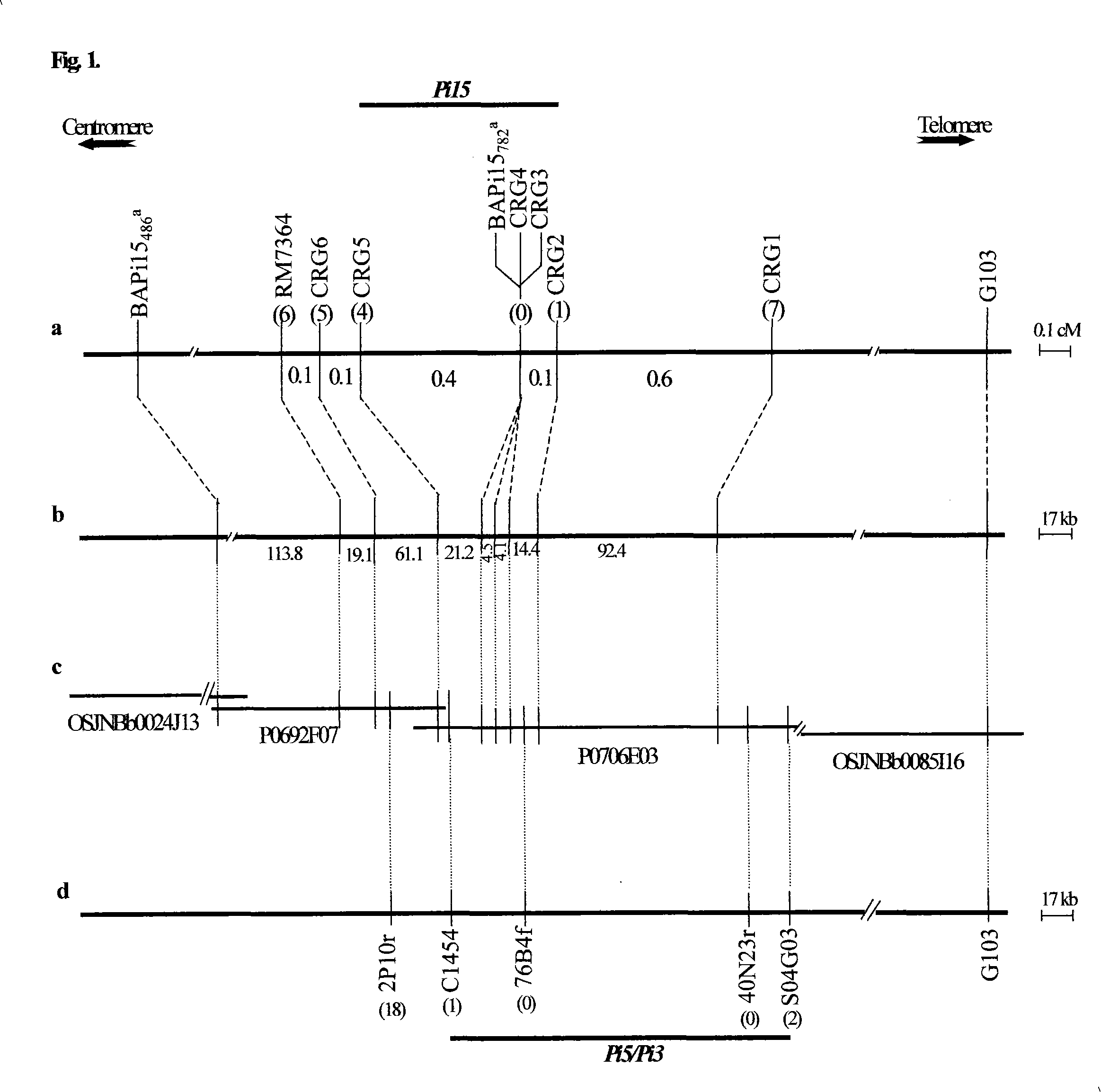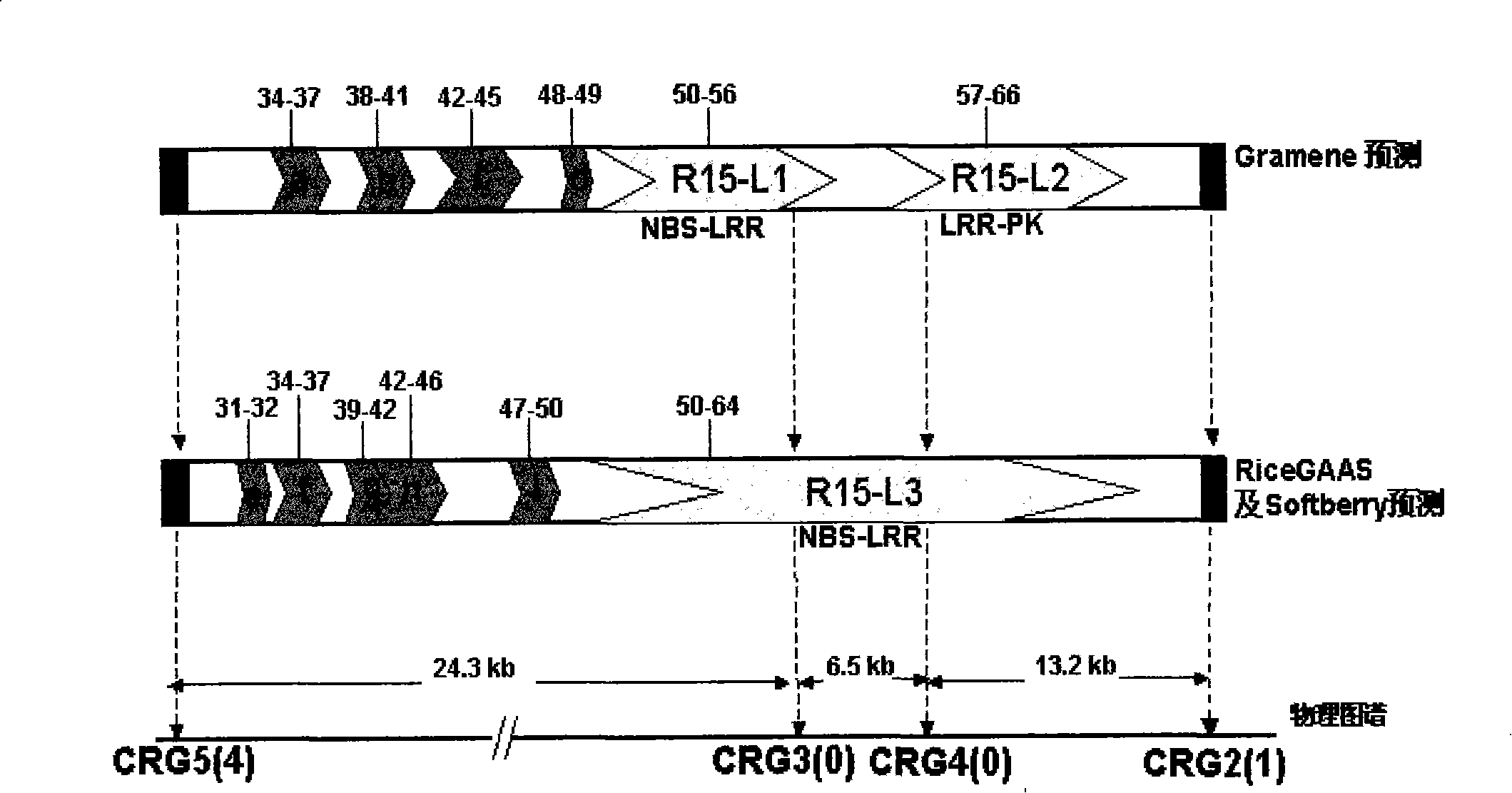Pi15 resistance gene of rice blast, and application
A rice blast and resistance gene technology is applied in the field of cloning of the rice blast resistance gene Pi15, which can solve the problems of cloning the rice blast resistance gene and the like, and achieve the effect of shortening the breeding time.
- Summary
- Abstract
- Description
- Claims
- Application Information
AI Technical Summary
Problems solved by technology
Method used
Image
Examples
Embodiment 1
[0044] Example 1: Genetic Analysis and Preliminary Mapping of Rice Blast Resistance Gene Pi15
[0045] The present invention is for 3 Fs derived from the hybrid combination of japonica rice disease-resistant variety GA25 and 3 indica rice disease-susceptible varieties AS20-1, IR36 and Q61. 2 Populations were inoculated with strains CHL0416 and CHL0670 that showed distinct non-affinity / affinity responses to both parental varieties, and the results showed that the three F 2 The segregation ratios of resistant plants and susceptible plants in the population were all consistent with 3R:1S, so it was inferred that the resistance of GA25 to the above three inoculated strains was controlled by a pair of dominant genes. to these 3 F's 2 The linkage analysis of the resistance genes corresponding to the population showed that they were controlled by the same dominant gene, so the three F 2 From the population, a large mapping population consisting of 76 resistant individuals and 504 s...
Embodiment 2
[0047]Example 2: Construction of an electronic contig covering the Pi15 site
[0048] Since RAPD marks BAPi15 782 and BAPi15 486 Closely linked to the Pi15 locus, therefore, after RAPD markers achieved chromosomal landing, a contig covering the Pi15 locus was constructed using the genome sequence of the reference variety Nipponbare as a reference, which was composed of BAC clone AP005879, PAC clone AP005593, AP005811 and AP005700 and other 4 clones ( figure 2 ).
Embodiment 3
[0049] Example 3: Fine Mapping of Rice Blast Resistance Gene Pi15
[0050] In order to further fine-tune the Pi15 locus, we developed PCR-based markers in the gene region of interest based on the constructed contigs. Using the online software tools ORF Finder and BLASTP to search the sequence of this region, 9 ORFs with LRR or NBS structures were obtained. Then, these 9 ORFs were used as CRG, and 9 pairs of specific primers were designed on their respective flanking sequences, and PCR amplification was carried out respectively. No bands could be amplified initially with rTaq DNA polymerase. After exploration, we adopted the cocktail method, combining Ex Taq and Probest Taq DNA polymerases to better solve the problem of mismatch between primers and template DNA, so that all CRGs were amplified. The results showed that: 6 CRG markers such as CRG1, CRG2, CRG3, CRG4, CRG5 and CRG6 showed good specificity (only the target band appeared), while the other 3 CRG markers were discard...
PUM
 Login to View More
Login to View More Abstract
Description
Claims
Application Information
 Login to View More
Login to View More - R&D
- Intellectual Property
- Life Sciences
- Materials
- Tech Scout
- Unparalleled Data Quality
- Higher Quality Content
- 60% Fewer Hallucinations
Browse by: Latest US Patents, China's latest patents, Technical Efficacy Thesaurus, Application Domain, Technology Topic, Popular Technical Reports.
© 2025 PatSnap. All rights reserved.Legal|Privacy policy|Modern Slavery Act Transparency Statement|Sitemap|About US| Contact US: help@patsnap.com



